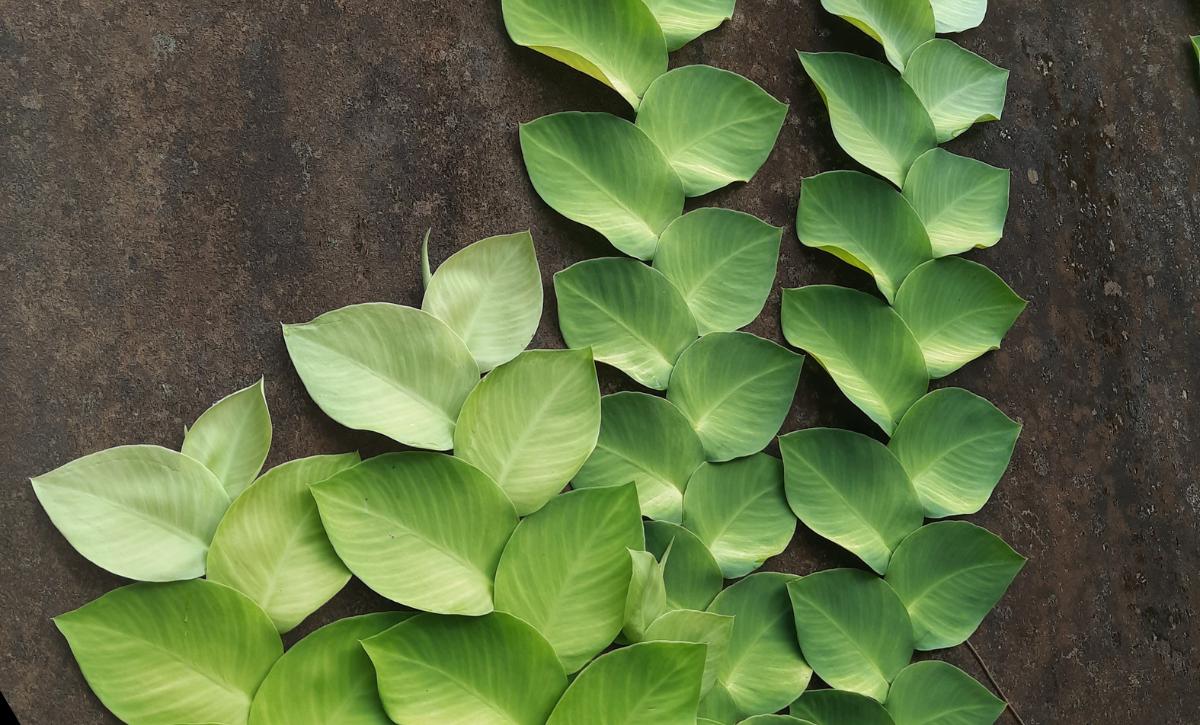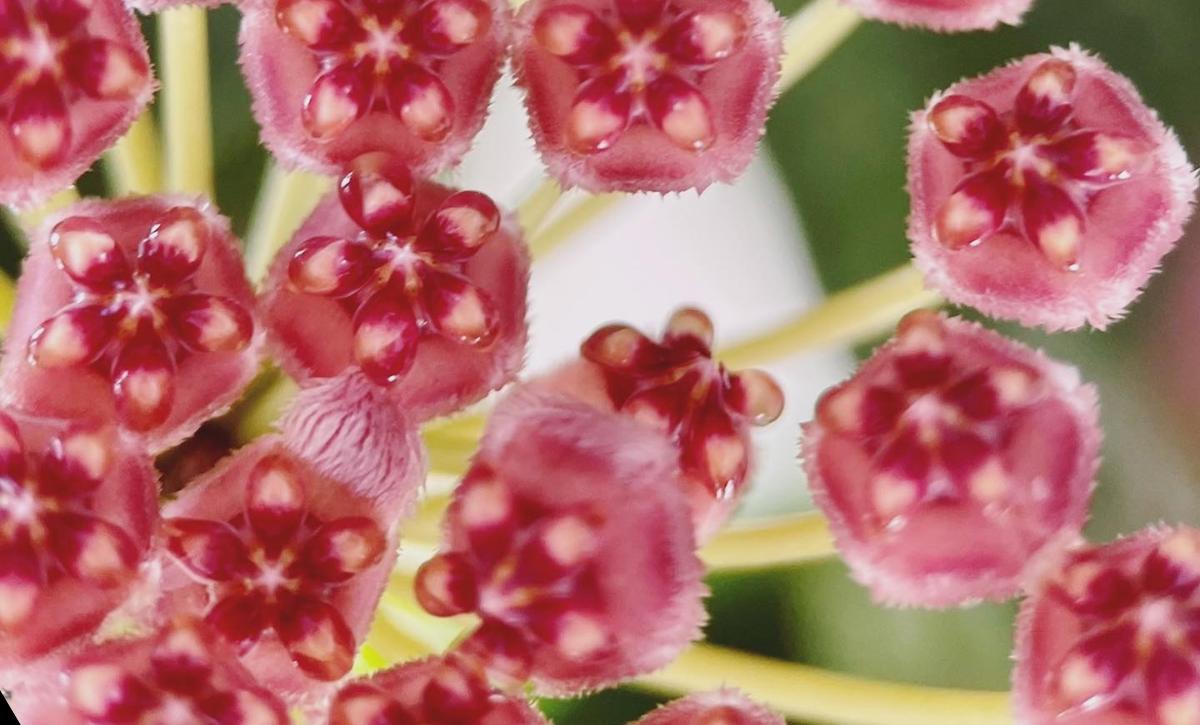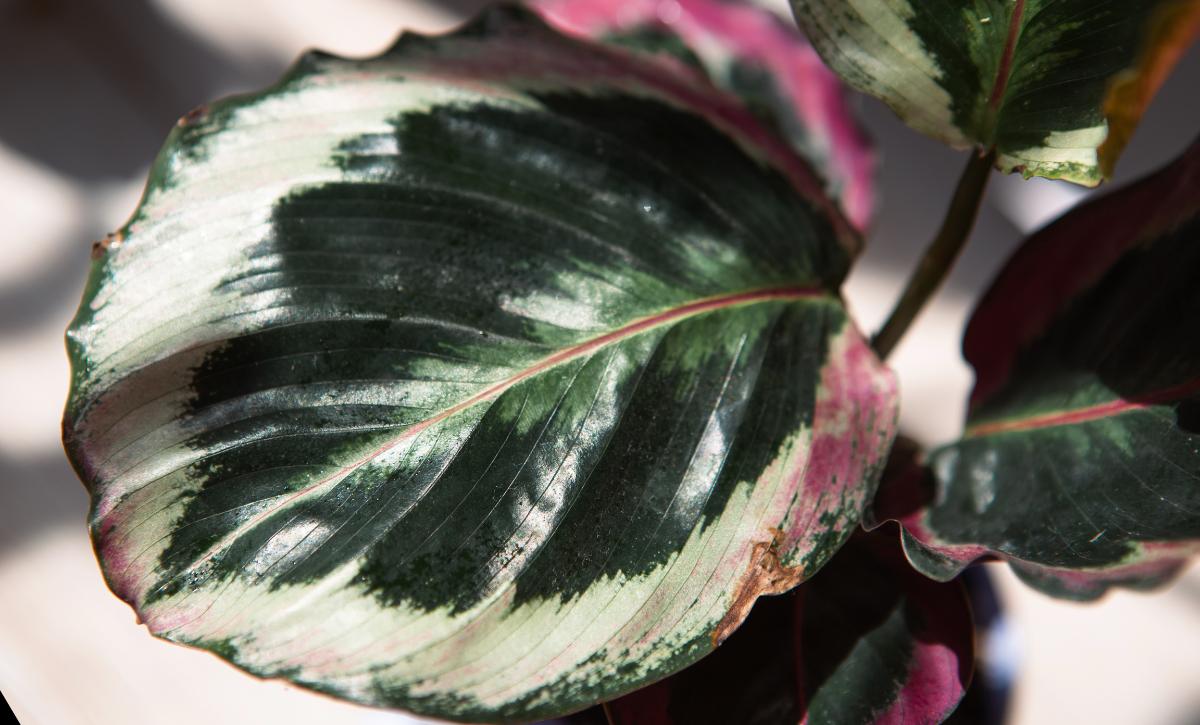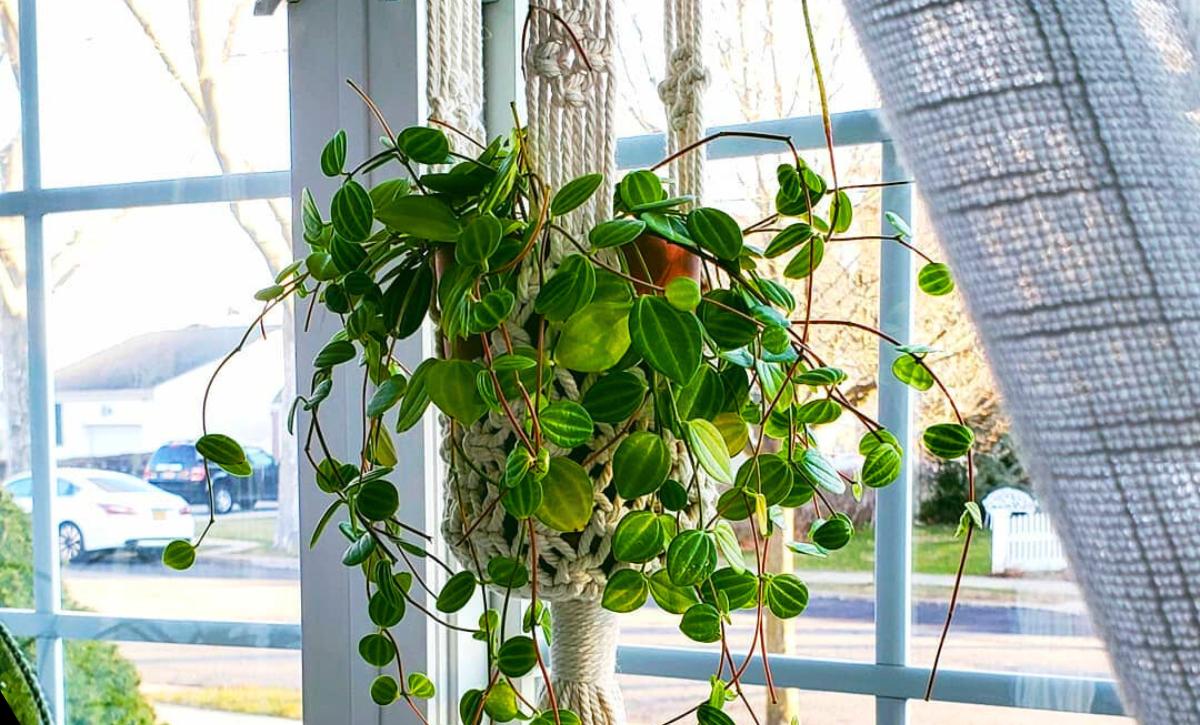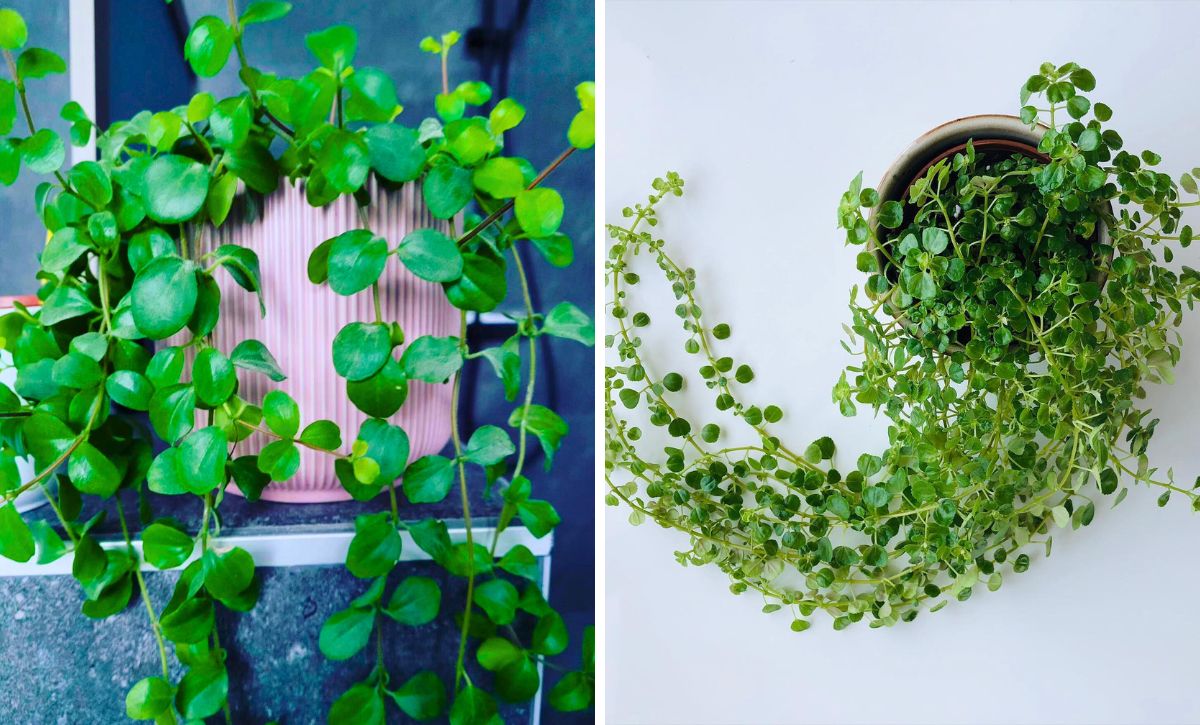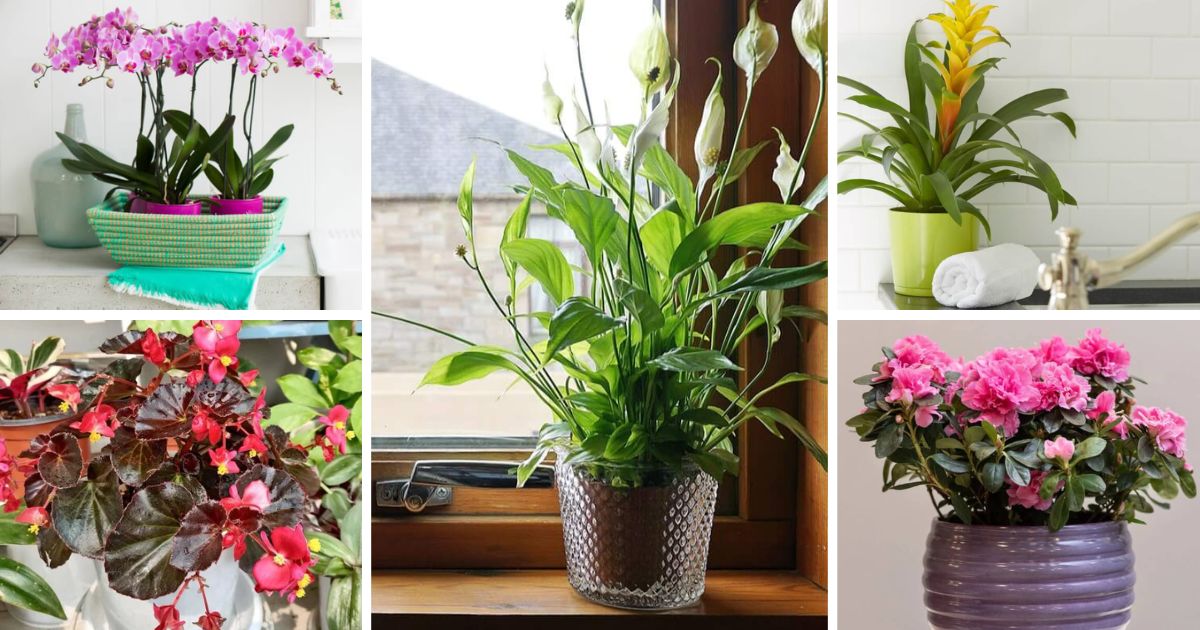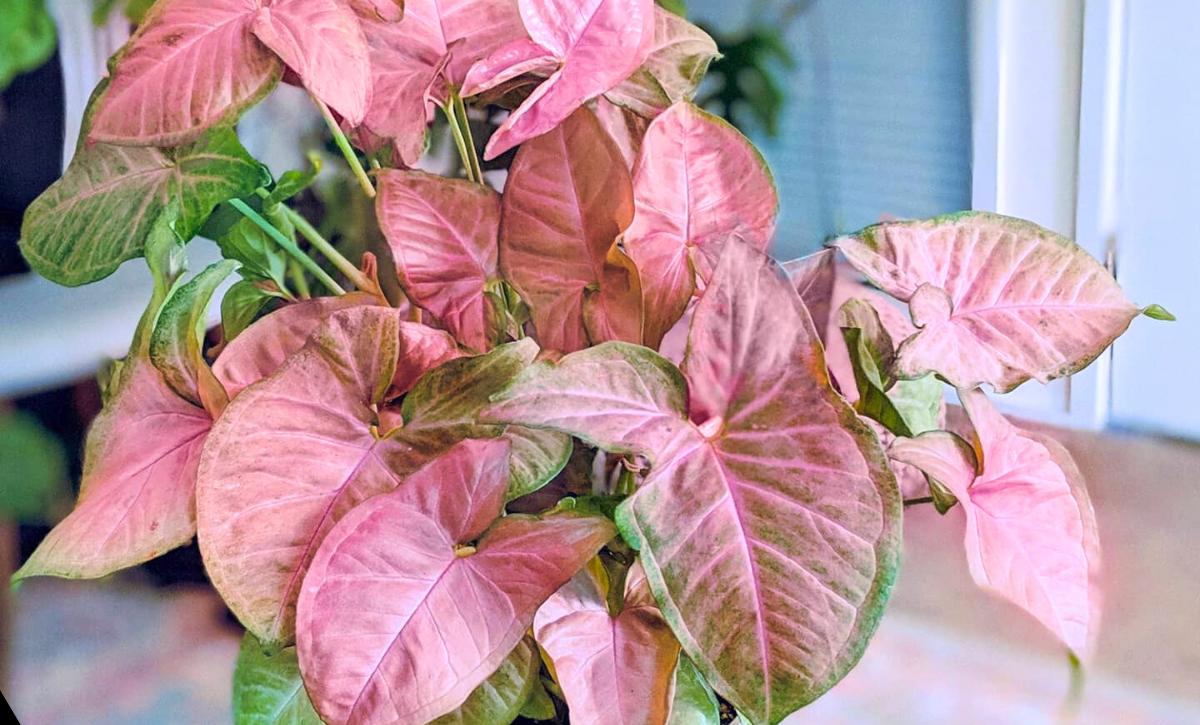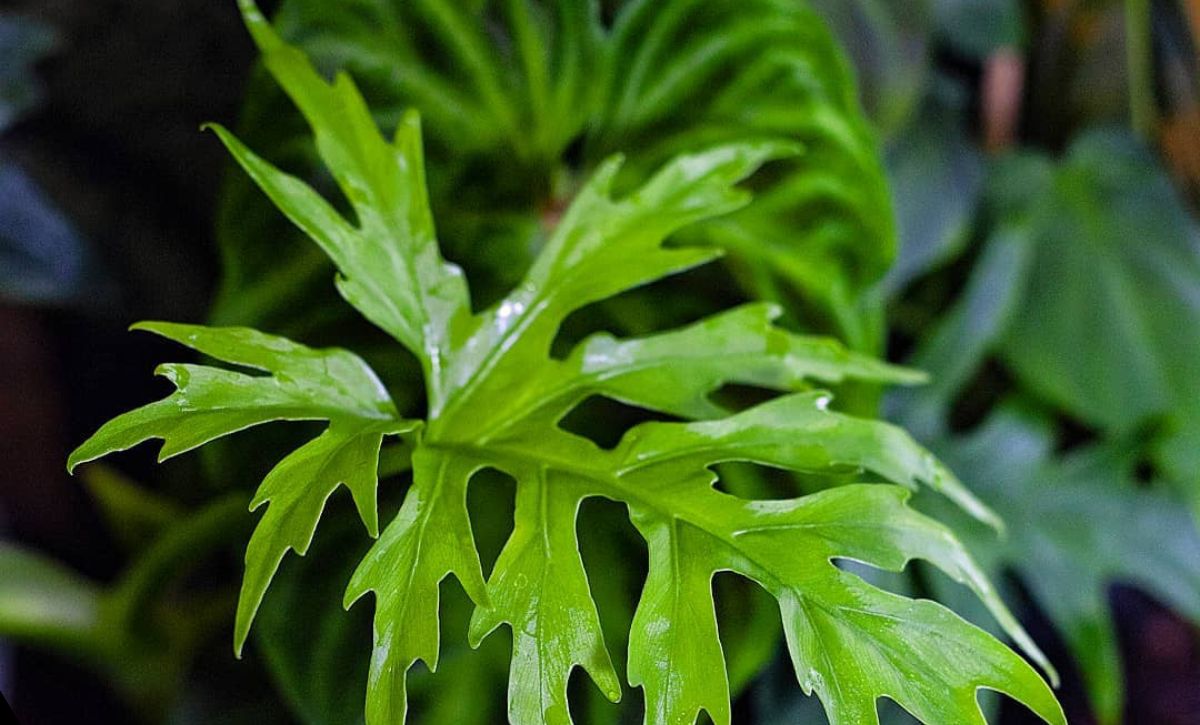Most plants usually have cheerful and exciting names. However, today, we will talk about a plant with quite a peculiar name!
It’s actually not such a cheerful name.
The Pilea depressa, also called baby tears, belongs to the Urticaceae family and the Pilea genus.

The Pilea depressa grows excellent as a climbing plant, vine, or a groundcover. Additionally, the plant is relatively easy to maintain, and proper care gives you stunning foliage that will adorn your home.
Today, we’ll discuss the Pilea depressa, including its outdoor and indoor care, propagation, and potential issues.
Here is the general information about this plant:
| Family: | Urticaceae |
| Genus: | Pilea |
| Scientific name: | Pilea Depressa |
| Common names: | Baby tears, Corsican creeper, Angel’s tear, Pollyanna vine, Depressed clearweed, Jacob’s tear |
| Native habitat: | Caribbean |
| Plant type: | Herbaceous perennial |
| USDA hardiness zones: | 10 – 11 |
Let’s get to it!
What Does the Pilea Depressa Look Like?
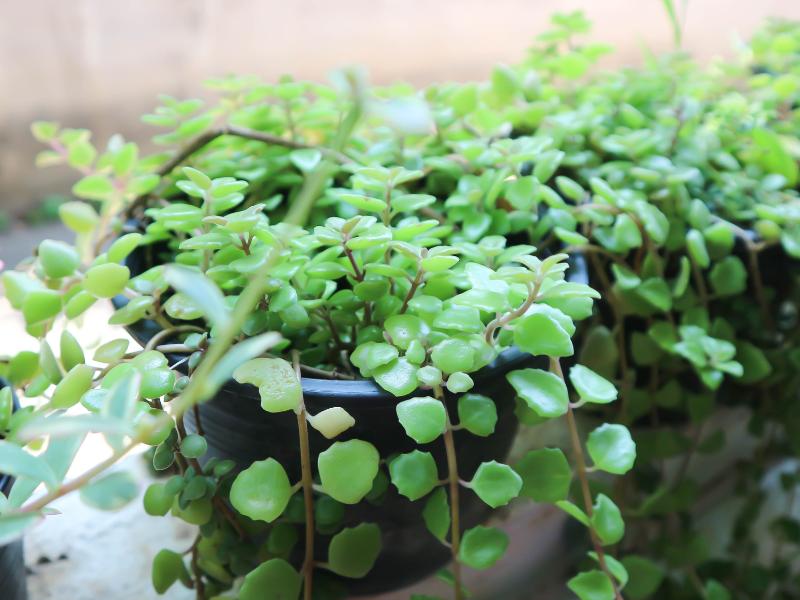
Before we get into details about this plant’s appearance and growth, let’s first resolve some confusion that may arise.
You may encounter another plant with a nickname similar to this one if browsing for baby tears online or searching for it in plant stores.
The ‘true’ baby tears, also known as Soleirolia soleirolii, belongs to the Soleirolia genus and looks like the Pilea depressa.
The leaf edges are what set these two plants apart. The Pilea has wavy edges, unlike Soleirolii’s round leaf edges.
The Pilea depressa is particularly desired as ground cover due to its rapid development in an ideal environment. The plant boasts many incredible green leaves, similar to the Pilea tiny tears, the smaller version.
The growth rate of this plant varies depending on where you grow it: outdoors or indoors. The plant’s growth rate decreases when grown indoors, and repotting and division will be required once a year.
The appearance of this plant doesn’t change throughout the year since it’s an evergreen perennial. You might find a case whereby an outdoor plant’s leaves become pale during winter, but your depressa will revert to normal as soon as spring comes.
Care Guide of Pilea Depressa
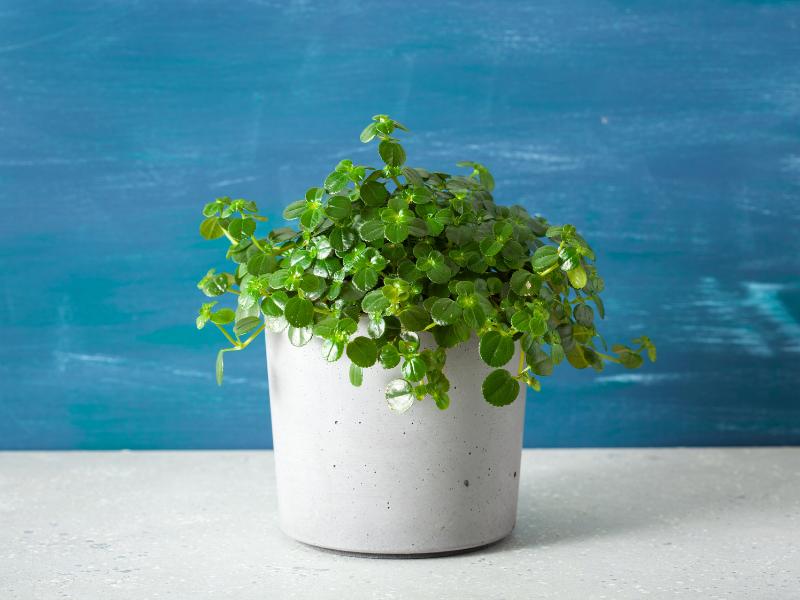
Light Conditions
You need to take into consideration the native habitat of the Pilea plant to be able to provide it with the perfect level of light.
In its native habitat, the Pilea depressa doesn’t receive direct sunlight. The plant is protected from intense sun rays by huge plants with big leaves and only receives bright indirect light. You must mimic these conditions in your home for the plant to thrive.
First, you need to know where not to place this plant. Since the south-facing window sills receive more direct sunlight, you need to provide your Pilea some protection or find another place.
Sheer curtains are an excellent option in blocking the direct sun rays, thus preventing the wilting and scorching of the Pilea’s leaves.
Don’t place your Pilea plant in a north-facing window since the plant won’t receive the required amount of sunlight to thrive.
The best place to place your Pilea is in a west or east-facing window, where the plant will receive plenty of indirect light.
If your Pilea isn’t receiving enough natural light, you can use artificial light; it will respond just fine.
The best way, especially for a beginner, is to get a light meter that can accurately assess the light conditions.
Temperature
Similar to light, we have to rely on the native habitat of the Pilea to find the ideal temperature for the plant.
A healthy Pilea needs slightly warmer temperatures since the plant grows in warmer climates.
Even though the plant can tolerate slightly high temperatures, we recommend keeping the temperature between 65 – 75℉ to be on the safe side.
The most significant issues you may encounter are temperature fluctuations, but here’s how you can solve them:
Don’t place your Pilea near air conditioners, vents, or doors and windows you often open and close.
Avoid placing your plant near fireplaces, radiators, or other heating sources.
Humidity
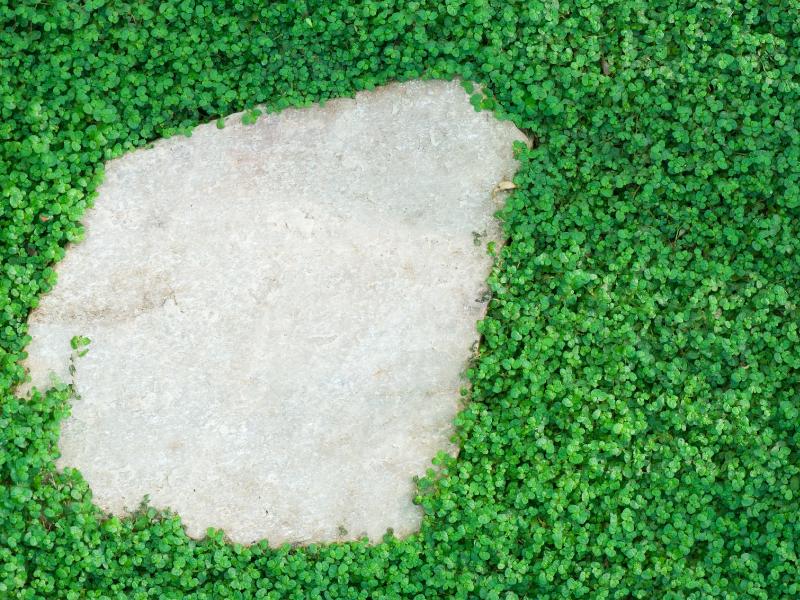
The Pilea depressa is a bit more selective than other ordinary houseplants regarding humidity levels. The Pilea comes from humid environments. Therefore, mimicking such conditions indoors will be challenging since typical households don’t have high humidity.
Keep humidity levels at around 75%. That’s relatively high, and we know you’re wondering how you will reach that level.
Don’t worry! We have prepared a few excellent methods you can use to raise the humidity. The best action would be to combine the techniques I’ll share with you to eliminate the humidity problem completely.
Let’s have a look!
Transfer your Plant to a More Humid Room
The rooms with water sources, such as bathrooms and kitchens, naturally have higher humidity.
Placing your Pilea in these rooms is probably for the best. Although people prefer having plants in bedrooms and living rooms, you should at least put one in every room.
Pebble Tray Method
Suppose you have plant enthusiasts in your friend circle. In that case, I’m sure you’ve encountered some decorative pebbles placed below their plants’ pots.
This pebble tray isn’t only for decorating the pot; it has another purpose.
The pebble tray method is one of the most popular methods of increasing humidity levels, and it has been proven effective by many gardeners (even us). Still, this method alone can’t achieve higher than 60% humidity levels.
The good thing about this method is that it has a DIY version. You only need water, pebbles, and a shallow dish to make your humidity tray.
Put the pebbles in the dish, add water, and place your Pilea depressa on it. The water in the container will evaporate and increase the plant’s humidity.
This plant has a disadvantage, though. The plant’s roots are very sensitive and can rot when exposed to water, even briefly; you must be very careful.
Therefore, limit the amount of water you put in the dish.
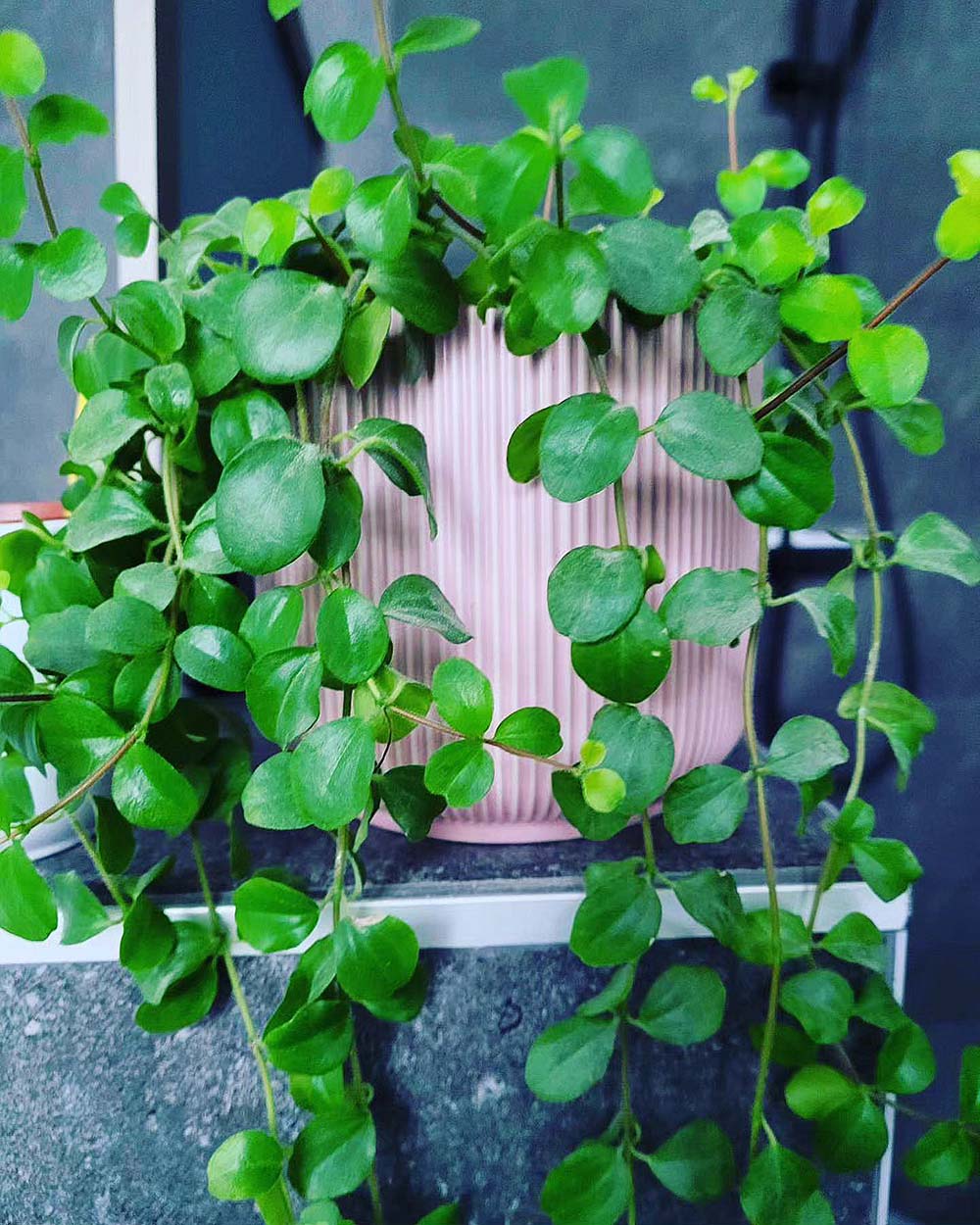
Create a Microclimate
Creating a microclimate sounds like something unique that requires a lot of knowledge, research, and investment.
Well, we’re here to tell you that it’s quite an efficient and simple method of raising humidity levels.
Place your other houseplants, such as Pilea glaucas and Begonias, near your depressed clearweed. Maybe some company will help with its depression!
On a more serious note, placing your plants near each other to create a microclimate is a straightforward and efficient method of raising humidity.
Furthermore, you’ll have a more beautiful plant collection!
Two Pots Method
As the name suggests, this method requires two pots and some sphagnum moss.
Look for a much bigger pot than the one with your depressa so that it can fit in. Ensure there are about 2 inches between the rims.
Add some water and sphagnum moss to the bottom of the bigger pot, and place the pot with your Pilea on the moss. Nature will take care of the rest.
The humidity level around your plant will increase as the water evaporates from the sphagnum moss.
Use a Humidifier
A humidifier is an excellent method of increasing humidity levels. However, this method could be more pricey compared to the others.
Apart from that one disadvantage, this is probably the most efficient method of achieving the humidity levels your Pilea requires.
New humidifiers today come with a humidity monitoring option. You only need to input the humidity level you prefer, and the humidifier will take care of the rest.
Even though it may seem a little expensive, especially for a beginner, having a humidifier is much better than watching your plants die due to incorrect humidity levels.
Soil
There are four vital factors to consider regarding the perfect soil for the Pilea depressa: water retention, nutrition, drainage, and pH level.
It would be best to test the soil before putting your depressed clearweed in it.
The Pilea depressa needs slightly acidic soil with a pH of 5.0 – 6.0 to thrive.
Regarding drainage, your potting mix requires components that prevent excess water in the soil.
Still, the Jacob’s tear plant also needs well-moisturized soil. Your potting mix should also have components that retain water well.
Combine perlite and peat moss to achieve this, or purchase a regular potting mix and add perlite.
Enough potting soil is critical for drainage, but you can purchase a pot with drainage holes to improve drainage. Buy a cache pot also and put the one with holes in it to conceal its unattractiveness.
Watering
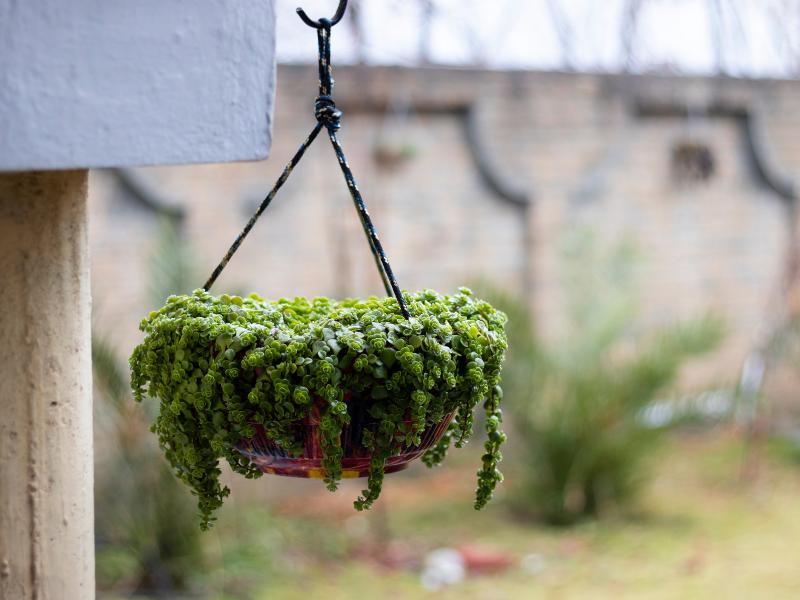
This is the most vital step of the Pilea Depressa care guide. You need to know the type of water, how to water, and when to water your Pilea plant.
Let’s have a look!
Frequency of Watering
Many factors influence the watering schedule for this type of plant. Still, the general rule is to water it every 4 – 8 days.
The soil moisture content will guide you in determining the ideal time for watering the Pilea plant; you should keep it moist and prevent it from drying out completely.
In this case, however, being moist doesn’t mean being overly wet. The roots will most likely rot if they sit in the water.
You need to determine the soil’s moisture to avoid such a scenario. Luckily, the following methods will help you achieve just that!
Insert your finger into the soil
This is one of the most popular methods used for checking moisture. Most experienced gardeners use only this method to check the moisture content. Still, it would be a bit challenging for beginners.
It’s pretty simple – only insert your finger into the soil and feel its wetness. Water the plant if the soil is dry an inch below the soil line.
Recheck the following day if the soil is wet. Combine this method with the ones discussed below until you gain some experience.
You can also insert a wooden stick about an inch or two into the soil. Water your Pilea plant if the stick is dry and no soil remains.
Check the soil color
Dry topsoil is usually light brown, meaning it needs watering.
On the other hand, soil with adequate water is dark brown. However, if your soil is mushy, you have a problem.
Lift your pot
You can also determine moisture by lifting the plant’s pot. This method is ideal for smaller plants such as succulents and Pileas.
A heavy pot indicates less watering is required. You’ll need some practice to master this technique since you may be unsure of the plant’s weight.
Use a moisture meter
This is probably the safest and most reliable method for checking moisture levels. A moisture meter will be handy, especially if you’re a beginner gardener.
Purchase a moisture meter that can also detect the soil’s pH level.
Watering Technique
Let’s discuss the best watering techniques for the Pilea plant.
First, let’s take a look at the top watering method. This involves watering the topsoil only and not the leaves!
Use a watering can with a long neck to control the water flow effectively. Add water gradually until you see it come out of the drainage holes.
The other method is called bottom watering. We recommend using a larger bucket for this method. Fill half the bucket with water and put your Pilea plant in it. Let it sit in the water for 15 minutes, then take it out to dry.
Both methods are effective, and you must choose one that suits your preferences.
Type of Water
You’ll need to consider the natural habitat of this plant to determine the perfect water for it.
Filtered water is a good option if there’s no access to rainwater. Use tap water as a last resort since it may contain high concentrations of fluoride and chlorine, which harm your plant.
Letting tap water sit overnight is an excellent method of reducing the high concentrations of these chemicals, so allow tap water to sit first if you use it.
Fertilizer
The Jacob’s tear plant doesn’t need a lot of food. Nonetheless, it would be best to implement a monthly feeding regimen during its growing season.
The Pilea plant doesn’t require food during the dormancy period, the winter months. The plant’s growth rate also slows down significantly since it’s resting.
Use a liquid houseplant fertilizer for your Pilea depressa to give it all the necessary nutrients.
Pruning
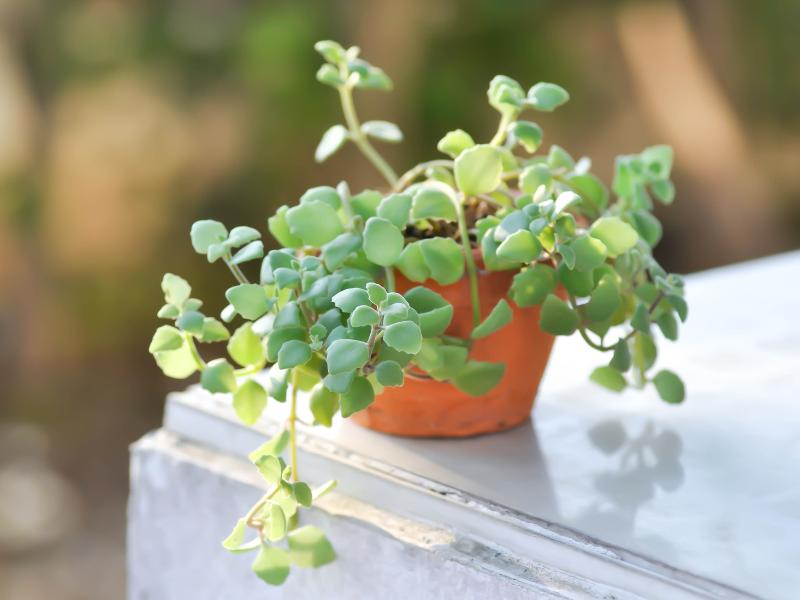
Depending on how you grow it, you may need to prune your Pilea plant.
The Pilea depressa will require occasional pruning when grown indoors. It must also be pruned occasionally if you keep it in a hanging pot.
If you plant it outside, you can allow it to grow naturally as ground cover or a vine. You’ll need to cut off any affected leaves to train your plant to grow in a particular way.
Remember to sanitize your shears before using them to prune your plant.
Repotting
The Pilea depressa has a slightly faster growth rate than other indoor houseplants. Therefore, it’ll benefit from repotting once a year or so due to this feature.
Observing the roots is the best way to tell if your plant needs repotting. When you notice them becoming compact, thick, and coming out of drainage holes, start preparing yourself to get a larger pot.
Repot your Pilea during spring if you’re growing it indoors to avoid transplant shock. Use a garden spade to ensure you carefully remove the root ball.
Brush away the soil surrounding the roots once you take your Pilea depressa out of its pot. Fill your new pot with adequate potting mix and transfer your plant to it.
Lastly, gently tap the soil around the plant’s base before watering it.
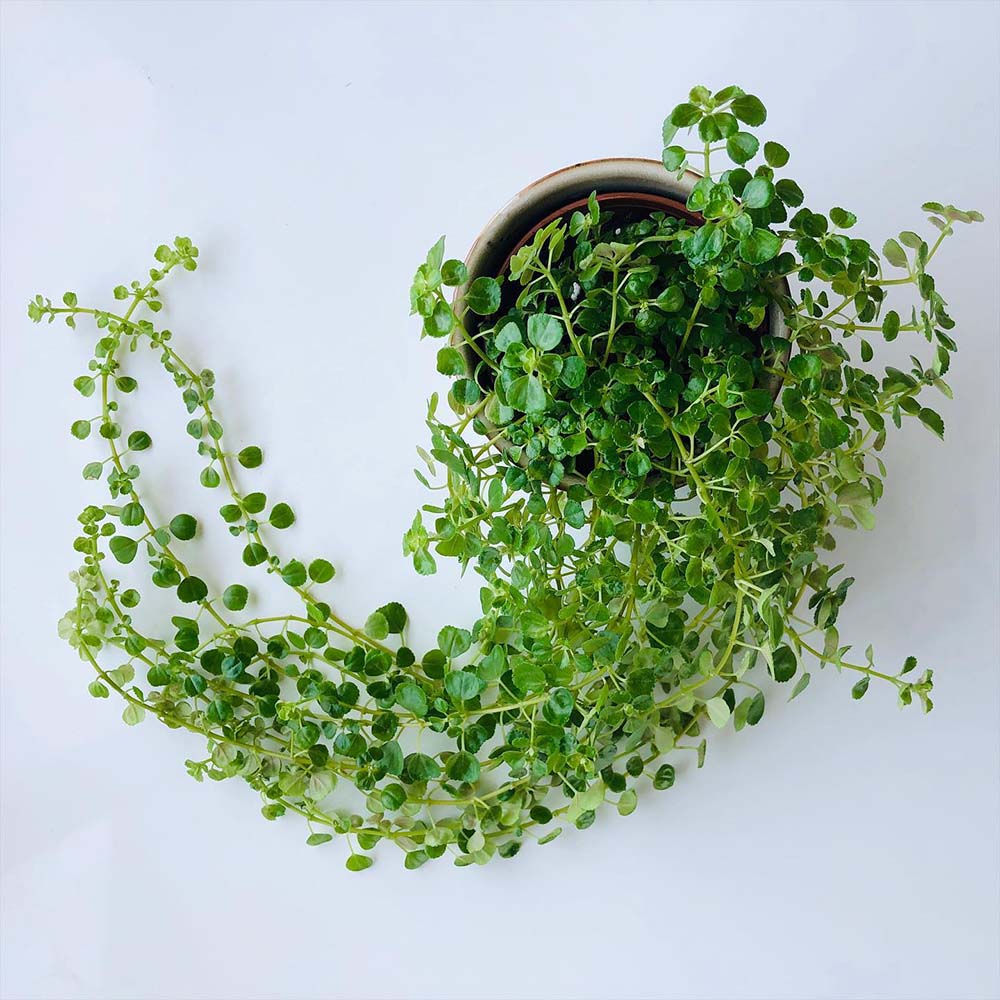
Staking
How you grow your Pilea depressa will determine if it needs staking. For example, staking might be necessary if you plan to grow your plant as a climbing vine.
Frequently tie small sections of the stalk to a moss pole or trellis to enable the plant to climb. The plant may cease its need for support as it grows older.
Drooping often occurs when the plant vines extend. Staking will be unnecessary if your Pilea depressa is in a hanging basket; it will look better!
You might, however, require some assistance if you want a more traditional ornamental plant.
Propagation of Pilea Depressa’ Baby Tears’ Plant
Propagation is a quick way of adding more Pilea depressas to your terrariums or fairy gardens.
You can propagate the Pilea plant through stem cuttings or division.
Let’s discuss both methods to find out more!
Stem Cuttings
You’ll need a few things to propagate your Pilea depressa through stem cuttings: a jar of water, a nursery pot, a new potting mix, and shears.
Use rubbing alcohol or bleach to prepare a sterilizing solution for your shears and avoid contamination.
Make a 6 – 8 inch incision with at least 2 -3 nodes, and put the cutting in a jar full of lukewarm water.
Ensure one of the nodes is in the water when submerging the cutting.
Place the jar with the Pilea plant stem, cutting in bright, indirect light. Remember to check on your plant regularly since some parts may rot, and your efforts will be all for nothing. It would be best to change the water every 2 -3 days.
You’ll notice new roots forming after a few weeks. You can transfer them to a pot when they’re approximately 2 inches long.
Division
Propagation of the Pilea depressa through division is quite simple.
You need only select a part below the stems to make a cutting and dig below the stem using a garden spade until you collect a few roots.
Separate the stem from the roots and transplant it to a pot with enough potting soil.
Simple as that! Expect new growth after a few weeks.
Growing the Pilea Depressa Outdoors
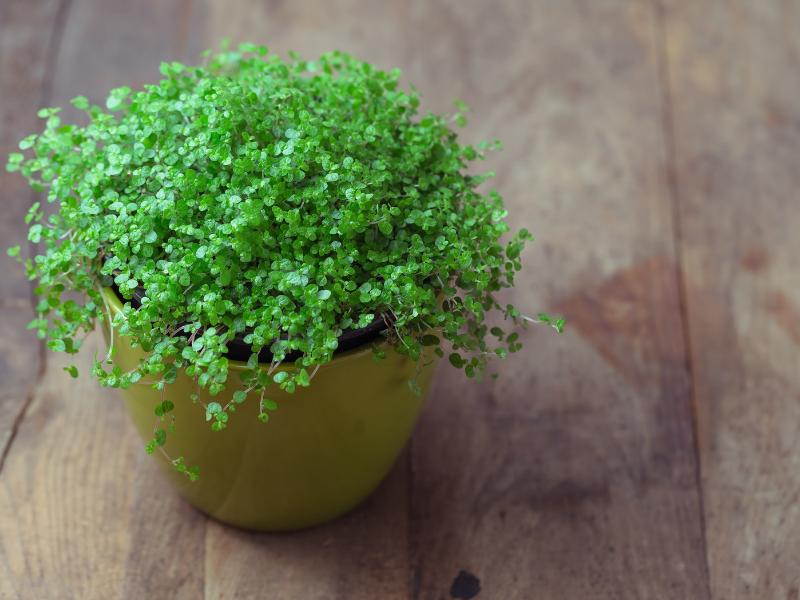
We mentioned how the Pilea depressa can be an excellent ground cover outdoors.
The first thing to consider when growing your Pilea outdoors is the time of the year to plant it. The best time is after the winter months when temperatures slightly increase and the threat of frost is averted.
Daytime temperatures should be above 70℉ for your Pilea depressa to fully develop. On the other hand, soil temperatures should be above 60℉.
Established plants are usually resilient enough when the temperature drops and can be brought indoors.
Single Pilea plants planted outdoors should be spaced 12 inches apart.
Plant your Pilea in a grid pattern if you plan to use it as ground cover and use the same spacing as single plants. Rows should be spaced about 8 – 10 inches.
The Pilea plant flourishes outdoors in partial shade. You can place your plant below trees if you’ve grown it in a pot.
You don’t really need to provide mulch to this plant since it acts as ground cover. However, if the potting soil doesn’t drain effectively, you could put your baby tears in a rock or pebble garden. Rocks will help prevent fungus growth by acting as a barrier between the leaves and stagnant water.
Common Issues
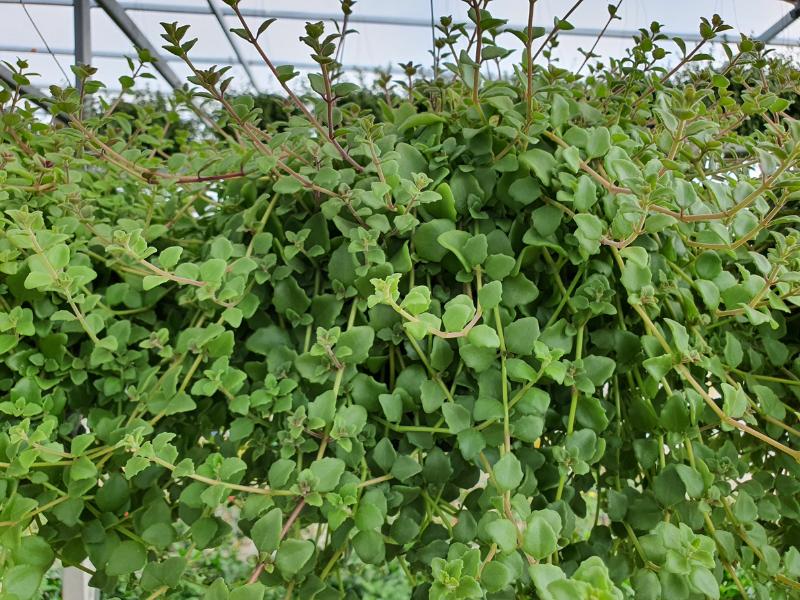
The following are issues you may experience with your Pilea depressa and how you can solve them!
Diseases
The Pilea plant is particularly susceptible to root rot, which is a result of overwatering. When infected by root rot, your plant will exhibit the following signs: drooping, foul odor, discolored roots, mushy soil, wilting and browning leaves, and yellowing.
Remove your Pilea from the old pot once you notice signs of root rot, and use sterilized tools to remove the affected roots. After removing the roots, repot your baby tears in a new pot filled with a fresh potting mix.
Pests
Whiteflies are some of the common pests that attack the Pilea depressa. You can see them on the underside of the plant’s leaves. They’re usually the same size as gnats but resemble moths. These tiny pests are responsible for leaving a sticky fluid called honeydew, which can cause mildew.
Aphids are other common pests that attack the Pilea depressa. An aphid infestation is dangerous and can cause your plant to wither and die. Some signs of an aphid infestation include yellow and drooping leaves or a mold-like black substance on the plant’s leaves.
Neem oil or rubbing alcohol are efficient methods of handling these pests. Dip a soft sponge on one of the two solutions and rub the affected leaves.
Brown and Yellow Leaves
Besides root rot, brown and yellow leaves can also be caused by direct sunlight.
Exposing your Pilea to direct sun for a long time will result in sunburn, which can cause the leaves to change or even die.
Remove the affected leaves and look for a new place to put your plant. Ensure you use the tips in the article to find the right spot!
Wilting
Overwatering problems are the most common regarding watering of the Pilea plant. However, waiting too long before watering or forgetting to water your plant will lead to an underwatered plant.
Wilting is the most common sign on an underwatered Pilea depressa.
Provide your baby tears frequent watering until you notice some signs of improvement.
Commonly Asked Questions
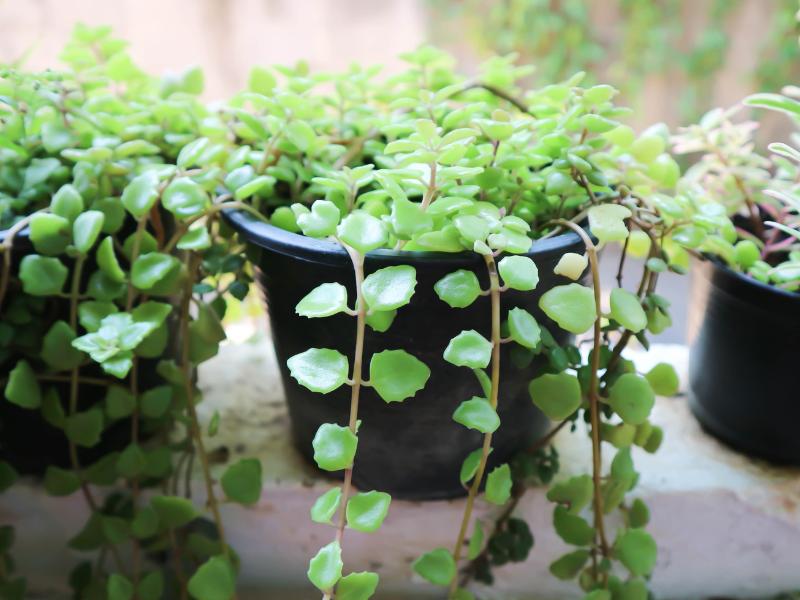
Is the Baby Tears toxic?
The Pilea depressa isn’t toxic and doesn’t affect pets or humans. As such, you can grow it as ground cover outdoors, as a climbing or vining plant, or as a houseplant without worrying about your loved ones being harmed.
Is the depressed clearweed a hardy plant?
The Pilea depressa can be regarded as a hardy plant. It flourishes in warmer climates when grown outdoors and can be successfully grown in many areas.
You need only pay attention to the light and watering of this low-maintenance plant, and you’ll be good to go!
Final Remarks
Using Pileas as houseplants has become a popular trend nowadays. The Pilea depressa is a new variety that’ll amaze people when it reaches its full potential.
Provide your depressa with well-draining soil, warm temperatures, high humidity, and bright indirect light, and it’ll be happy. Fertilize your plant monthly during the growing season and water it when an inch below the soil line is dry.
Propagation of the Pilea is very simple, meaning you can give it to your fellow plant enthusiasts as a gift!
That’s all we have to share for today! Bye!

